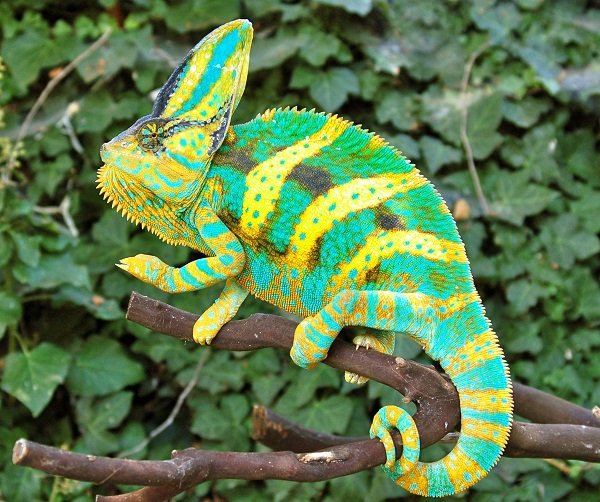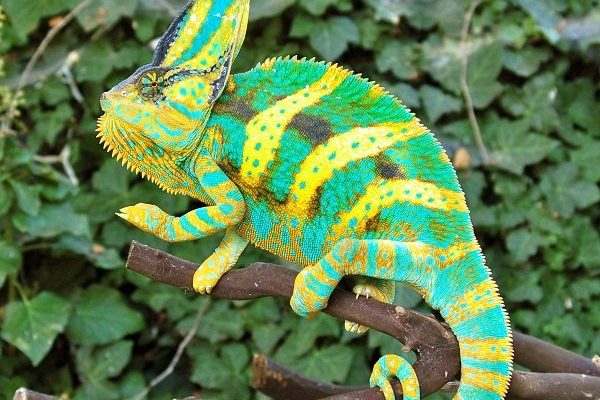
Veiled chameleons typically live between 5 to 10 years in captivity, but there’s a lot more to it than just that number. Factors like diet, habitat, and care play significant roles in determining how long these fascinating creatures thrive in your home. So, let’s break down everything you need to know about their lifespan and the elements that affect it.
Understanding the Average Lifespan of Veiled Chameleons
Veiled chameleons, known scientifically as *Chamaeleo calyptratus*, have an average lifespan that surprises many new owners. While they can live up to 10 years with the right care, it’s also common for them to live around 5 to 7 years. This can feel a bit short when you look at how much personality these little guys have!
Here’s the thing: their lifespan isn’t just about the years ticking by; it’s also about the quality of those years. Just like humans, the environment, diet, and care level can dramatically affect how long they live. This means that if you’re committed to providing a healthy and stimulating habitat, you might be rewarded with a longer life for your chameleon.
Factors like genetics can also impact lifespan. Some chameleons may just be predisposed to health issues. It’s like how some people live into their 90s while others might not. So, deciding to bring a veiled chameleon into your life means embracing a journey filled with care and attention.
How to Maximize Your Chameleon’s Lifespan
If you’re starting this adventure, you’ll want to do everything you can to help your chameleon live a long life. Here are some essential tips:
- Proper Habitat: Ensure your chameleon’s enclosure mimics their natural environment. This means vertical space, branches, and plants for climbing.
- Temperature Regulation: Create a temperature gradient in the habitat. Chameleons need a basking spot of around 85 to 90°F and a cooler area to retreat to.
- Humidity Levels: Maintain humidity levels between 40% to 70%. Regular misting can help with hydration.
- Lighting: Use UVB lighting to help them absorb calcium, which is crucial for their health.
All these factors not only keep your chameleon comfortable but also help prevent stress—a major factor in reducing lifespan. The happier they are, the longer they’re likely to stick around!
The Role of Diet in a Chameleon’s Lifespan
Diet is another cornerstone of keeping your veiled chameleon healthy. A well-balanced diet contributes significantly to their lifespan. Here’s what you should consider:
Chameleons primarily consume live insects, so offering a variety of crickets, roaches, and worms is vital. It’s essential to gut-load these insects before feeding them to your chameleon. This means feeding the insects nutritious foods, ensuring your chameleon gets the vitamins and minerals they need.
Also, consider dusting their food with a good quality calcium supplement and vitamin powder. This can help prevent deficiencies, which could shorten their lifespan. Remember, this little creature relies on you for its nutrition—so being informed about their dietary needs can go a long way!
Common Health Issues That Affect Lifespan
Just like any pet, veiled chameleons can face health issues that might shorten their lifespans. Being aware of these can help you catch problems early:
- Respiratory Infections: These can be caused by improper humidity. Watch for signs like wheezing or lethargy.
- MBD (Metabolic Bone Disease): Often due to low calcium or lack of UVB light. Look for symptoms like weak limbs or inability to climb.
- Parasites: Internal parasites can be a hidden danger. Regular check-ups at the vet can help detect these before they become serious.
Keeping an eye on your chameleon’s behavior can sometimes be the best way to ensure they live a long, full life. Trust your instincts; if something seems off, it’s worth getting advice from a vet.
Environmental Factors Impacting Lifespan
The environment a veiled chameleon lives in greatly affects its lifespan. Here are a few crucial aspects to keep in mind:
First, stress is a significant factor. A stressful environment—too much noise, frequent handling, or improper tank mates—can lead to a shorter lifespan. Chameleons thrive in calm and stable conditions.
Second, proper ventilation is key. A good airflow helps prevent mold and bacteria buildup. Make sure the enclosure allows for fresh air to circulate while still retaining humidity.
Lastly, avoid temperature fluctuations. Rapid changes can be shocking for your chameleon, leading to stress or illness.
Comparing Lifespan with Other Chameleon Species
Veiled chameleons aren’t the only species out there, and comparing their lifespans to others can be eye-opening. For instance:
– Panther Chameleons: Typically live about 5 to 7 years, similar to veiled chameleons. However, they often require slightly different care.
– Jackson’s Chameleons: They usually have a shorter lifespan, often only 4 to 6 years in captivity.
When choosing a chameleon, consider not just lifespan but also care requirements and personality. Knowing what to expect can make your pet ownership experience much more fulfilling!
Understanding how long a veiled chameleon can live is just the tip of the iceberg. While they can live between 5 to 10 years, it’s all about your commitment to their care. The interplay of habitat, diet, health, and environment will shape their journey through life.
If you’re ready to take on the responsibility, creating a nurturing home for a veiled chameleon can be one of the most rewarding experiences. You’ll form a bond with a truly unique pet, and with proper care, you can ensure they thrive for years. So, grab your coffee, and let this adventure begin!

